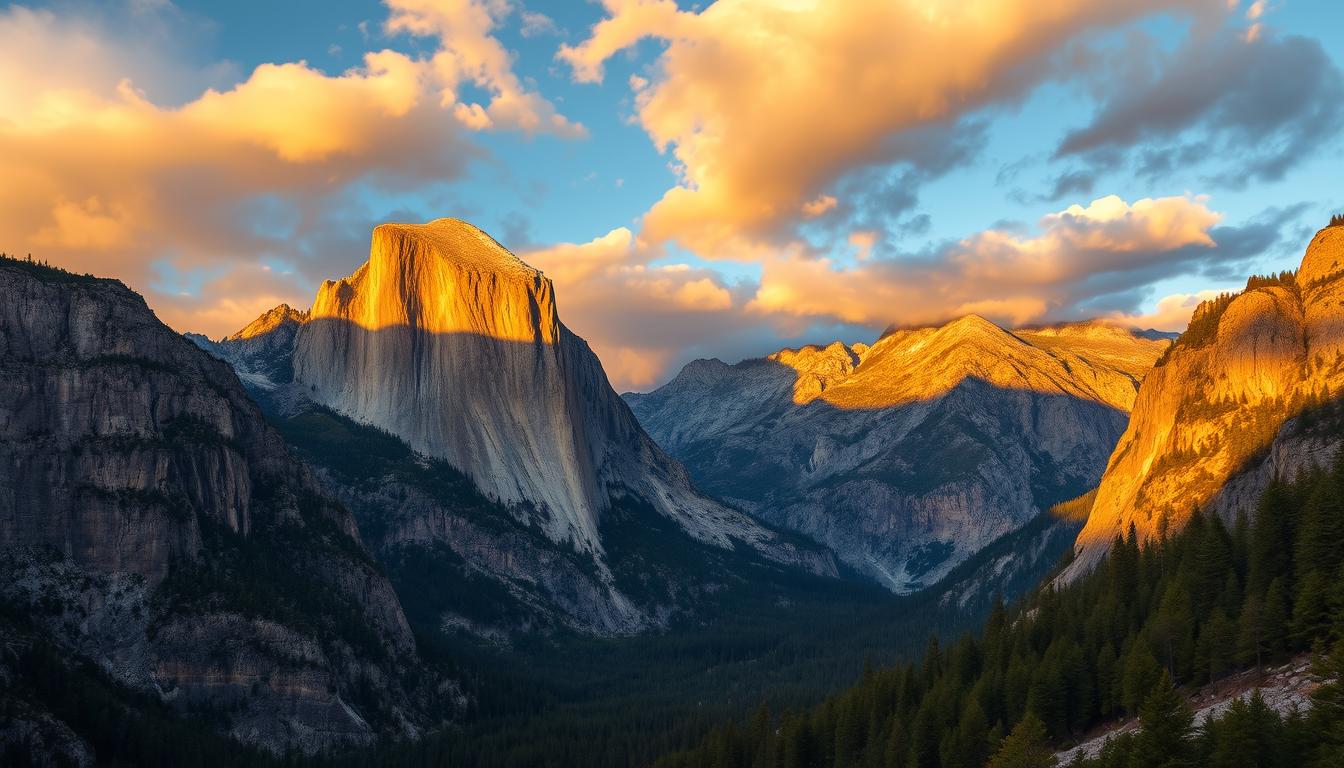1. Yosemite National Park, California
Must-See Attractions
Yosemite National Park stands as the crown jewel among America’s most stunning national parks, captivating visitors with its iconic granite monoliths and thundering waterfalls. Half Dome and El Capitan rise majestically from the valley floor, while Yosemite Falls—North America’s tallest waterfall at 2,425 feet—creates a mesmerizing spectacle, especially during spring runoff. Don’t miss Glacier Point for panoramic valley views or the ancient giants in Mariposa Grove, home to over 500 mature sequoias including the Grizzly Giant, estimated to be 1,800 years old.
Best Hiking Trails
- Mist Trail to Vernal and Nevada Falls (Moderate to Strenuous, 7 miles round-trip) – Experience the refreshing mist as you climb alongside these powerful waterfalls.
- Valley Floor Loop (Easy, 13 miles full loop) – A gentle trail offering spectacular views of Yosemite’s iconic features without the elevation gain.
- Four Mile Trail (Strenuous, 9.6 miles round-trip) – Challenging switchbacks reward hikers with breathtaking views from Glacier Point.
Ideal Visiting Seasons
Spring (April-May) showcases Yosemite’s waterfalls at peak flow, creating spectacular displays as snowmelt cascades down granite cliffs. Fall (September-October) offers pleasant temperatures and fewer crowds, with beautiful golden foliage adding warmth to the landscape. Summer brings perfect hiking weather but also the heaviest crowds, while winter transforms the valley into a serene snow-covered wonderland, though some roads and trails close seasonally.
2. Grand Canyon National Park, Arizona

Must-See Attractions
The Grand Canyon defies description with its immense scale—277 miles long, up to 18 miles wide, and over a mile deep. The South Rim offers the most accessible viewpoints, including Mather Point and Yavapai Observation Station, where the canyon’s layered geology tells Earth’s 2-billion-year history. The North Rim, standing 1,000 feet higher, provides a more secluded experience with spectacular vistas from Bright Angel Point and Cape Royal, where you can see the Colorado River winding through the canyon’s depths.
Best Hiking Trails
- Rim Trail (Easy, various distances) – A mostly paved path along the South Rim offering stunning views without significant elevation changes.
- Bright Angel Trail (Moderate to Strenuous, 12 miles round-trip to Plateau Point) – The park’s most popular trail with shade, water stations, and incredible inner canyon views.
- South Kaibab Trail (Strenuous, 3 miles round-trip to Cedar Ridge) – Offers the most dramatic vistas per mile but lacks shade and water.
Ideal Visiting Seasons
Spring (March-May) and fall (September-November) offer ideal temperatures for hiking and exploring, with fewer crowds than summer. Summer brings intense heat in the canyon’s depths, often exceeding 100°F, making rim activities more comfortable than descent hikes. Winter provides a magical experience with occasional snow dusting the rim, dramatically contrasting with the red canyon walls, though some North Rim facilities close from mid-October to mid-May.
3. Zion National Park, Utah

Must-See Attractions
Zion National Park’s towering sandstone cliffs in vibrant shades of cream, pink, and red create a mesmerizing landscape unlike anywhere else. The main canyon, carved by the Virgin River, features walls rising 2,000 feet from the valley floor. Kolob Canyons in the park’s northwest section offers a less-visited alternative with finger-like canyons and spectacular viewpoints. Court of the Patriarchs, Temple of Sinawava, and the Emerald Pools showcase the park’s diverse beauty, from hanging gardens to natural amphitheaters.
Best Hiking Trails
- The Narrows (Moderate to Strenuous, various distances) – Wade through the Virgin River between towering canyon walls that narrow to just 20 feet apart in places.
- Angels Landing (Strenuous, 5.4 miles round-trip) – A thrilling climb with chain assists leading to panoramic views (permit required).
- Canyon Overlook Trail (Easy to Moderate, 1 mile round-trip) – A short hike offering spectacular views of Zion Canyon.
Ideal Visiting Seasons
Spring (April-May) brings pleasant temperatures and blooming wildflowers, while fall (September-October) offers warm days, cool nights, and stunning foliage. Summer is the busiest season with temperatures often exceeding 100°F, though the Narrows provides a cool escape. Winter transforms the park with occasional snow dusting the red rocks, creating a magical contrast, and offering the most solitude for visitors willing to brave cooler temperatures.
Essential Gear for Your National Park Adventures
After exploring the towering cliffs of Zion and preparing for the diverse landscapes ahead, having the right equipment can make all the difference in your national park experience.

Osprey Talon 22 Hiking Daypack
Perfect for day hikes like Angels Landing in Zion or the Mist Trail in Yosemite, this lightweight backpack features an integrated hydration sleeve, multiple compartments for organizing gear, and a ventilated back panel to keep you cool on challenging trails. The adjustable harness ensures comfort during long adventures through America’s most stunning national parks.

MSR Hubba Hubba NX 2-Person Tent
When exploring remote areas of Grand Canyon or staying near Zion’s magnificent landscapes, this lightweight, durable tent provides protection from the elements. Its quick setup design is perfect after a long day of hiking, while the rainfly keeps you dry during unexpected weather changes common in mountainous national parks. The mesh canopy offers stargazing opportunities on clear nights.
4. Yellowstone National Park, Wyoming/Montana/Idaho
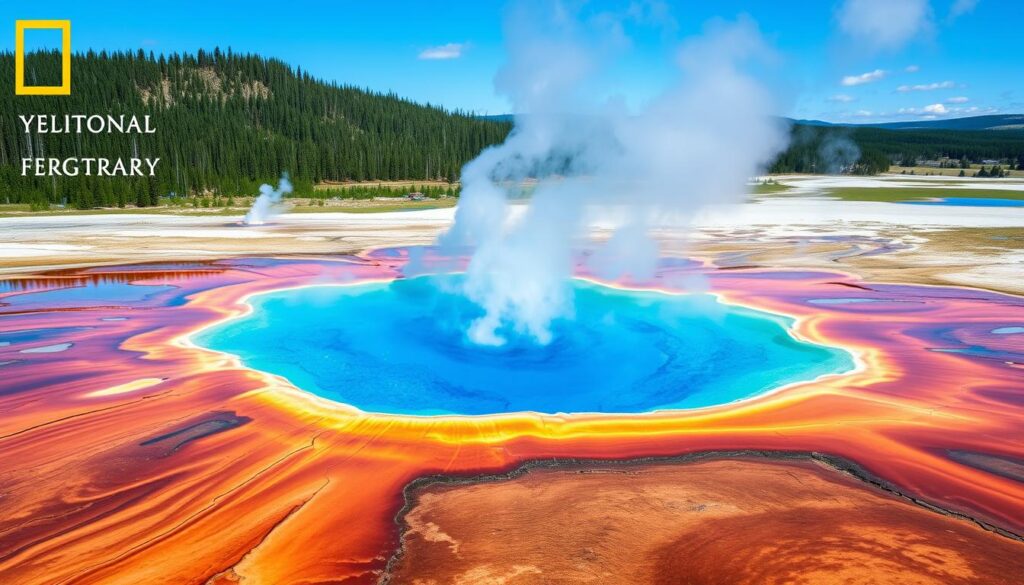
Must-See Attractions
As America’s first national park, Yellowstone showcases the world’s largest collection of geothermal features, with over 10,000 thermal wonders. The iconic Old Faithful geyser erupts approximately every 90 minutes, while Grand Prismatic Spring dazzles with its rainbow-colored bacterial mats surrounding a deep blue center. Mammoth Hot Springs presents terraced limestone formations, and the Grand Canyon of the Yellowstone features dramatic waterfalls plunging into a vividly colored gorge. Wildlife viewing opportunities abound, with bison, elk, bears, and wolves roaming the park’s diverse ecosystems.
Best Hiking Trails
- Fairy Falls Trail (Easy to Moderate, 5 miles round-trip) – Leads to a 200-foot waterfall with an optional detour to an overlook of Grand Prismatic Spring.
- Mount Washburn Trail (Moderate to Strenuous, 6.4 miles round-trip) – Offers panoramic views of the park from a 10,243-foot summit.
- Lamar Valley Trail (Easy, various distances) – Perfect for wildlife viewing in what’s often called “America’s Serengeti.”
Ideal Visiting Seasons
Summer (June-August) provides access to all park roads and facilities, with comfortable daytime temperatures, though this is also peak tourist season. Spring (May-early June) offers wildlife viewing opportunities with newborn animals and fewer crowds, while fall (September-October) brings beautiful foliage and active wildlife preparing for winter. Winter transforms Yellowstone into a snow-covered wonderland accessible primarily by snowcoach or snowmobile, with steaming geysers creating surreal landscapes against the snow.
5. Glacier National Park, Montana

Must-See Attractions
Known as the “Crown of the Continent,” Glacier National Park features over 700 lakes, 1,000 species of plants, and hundreds of animal species across its million acres. The legendary Going-to-the-Sun Road traverses the park east to west, crossing the Continental Divide at Logan Pass and offering spectacular views of glacier-carved valleys. Many Glacier region showcases some of the park’s most dramatic scenery, while Lake McDonald, the park’s largest lake, reflects surrounding mountains in its crystal-clear waters. Though rapidly receding, the park’s remaining 25 active glaciers (down from 150 in 1850) can be viewed on several trails.
Best Hiking Trails
- Highline Trail (Moderate to Strenuous, 11.8 miles one-way) – A spectacular ridge-line trail offering panoramic views and wildlife sightings.
- Hidden Lake Overlook (Moderate, 2.7 miles round-trip) – A popular trail from Logan Pass to a stunning alpine lake surrounded by mountains.
- Grinnell Glacier Trail (Strenuous, 7.6 miles round-trip) – Leads to one of the park’s most accessible glaciers with breathtaking views throughout.
Ideal Visiting Seasons
Summer (July-August) is the prime season when all park facilities are open and the Going-to-the-Sun Road is fully accessible, though this means larger crowds. Late June and early September offer slightly fewer visitors while still providing good weather and access. Spring brings wildflowers and rushing waterfalls but limited road access, while fall showcases beautiful foliage and active wildlife. Winter transforms the park into a quiet wonderland perfect for cross-country skiing and snowshoeing, though most facilities close and road access is extremely limited.
6. Grand Teton National Park, Wyoming
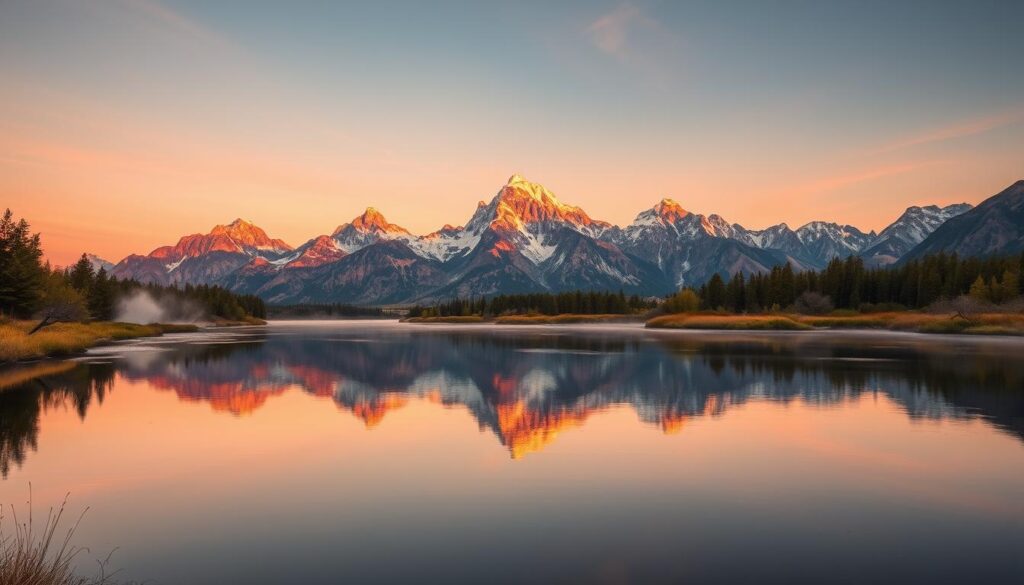
Must-See Attractions
Grand Teton National Park’s jagged mountain range rises dramatically from the valley floor without foothills, creating one of the most recognizable skylines in America’s national parks. The 40-mile Teton Range is crowned by Grand Teton peak at 13,775 feet. Pristine lakes, including Jenny Lake and Jackson Lake, reflect the mountains in their clear waters. Historic homesteads like Mormon Row and Menor’s Ferry preserve the area’s pioneer history, while abundant wildlife including moose, elk, bison, and bears roam the diverse habitats from sagebrush flats to alpine meadows.
Best Hiking Trails
- Cascade Canyon Trail (Moderate, 9 miles round-trip) – Beginning with a boat ride across Jenny Lake, this trail offers spectacular mountain views and frequent wildlife sightings.
- Taggart Lake Loop (Easy, 3.3 miles) – A family-friendly hike to a beautiful lake with perfect Teton reflections.
- Death Canyon to Static Peak Divide (Strenuous, 16.8 miles round-trip) – For experienced hikers, this challenging trail offers solitude and panoramic views.
Ideal Visiting Seasons
Summer (June-August) provides ideal hiking weather and access to all park facilities, though with larger crowds. Spring (May-early June) offers wildlife viewing opportunities with newborn animals and beautiful wildflowers. Fall (September-October) brings spectacular foliage, active wildlife, and fewer visitors. Winter transforms the park into a quiet wonderland perfect for cross-country skiing and snowshoeing, with the mountains creating a dramatic backdrop against the snow-covered landscape.
Stay Hydrated and Protected on the Trail
When exploring the diverse terrains of America’s most stunning national parks, from Glacier’s alpine meadows to Grand Teton’s rugged trails, proper hydration and footwear are essential for a safe and comfortable adventure.

Hydro Flask 32oz Wide Mouth Water Bottle
Stay hydrated on challenging hikes like Glacier’s Highline Trail or Grand Teton’s Cascade Canyon with this double-wall vacuum insulated bottle that keeps water cold for up to 24 hours. The wide mouth accommodates ice cubes and makes refilling easy at park water stations. The durable construction withstands the bumps and drops that come with trail adventures through America’s most stunning landscapes.

Merrell Moab 2 Mid Waterproof Hiking Boots
Navigate diverse terrains from Yellowstone’s geothermal areas to Grand Teton’s rocky trails with these versatile hiking boots. The Vibram soles provide excellent traction on wet and dry surfaces, while the waterproof membrane keeps feet dry when crossing streams or hiking in unexpected rain. The supportive design reduces fatigue during long days exploring America’s most stunning national parks.
7. Olympic National Park, Washington
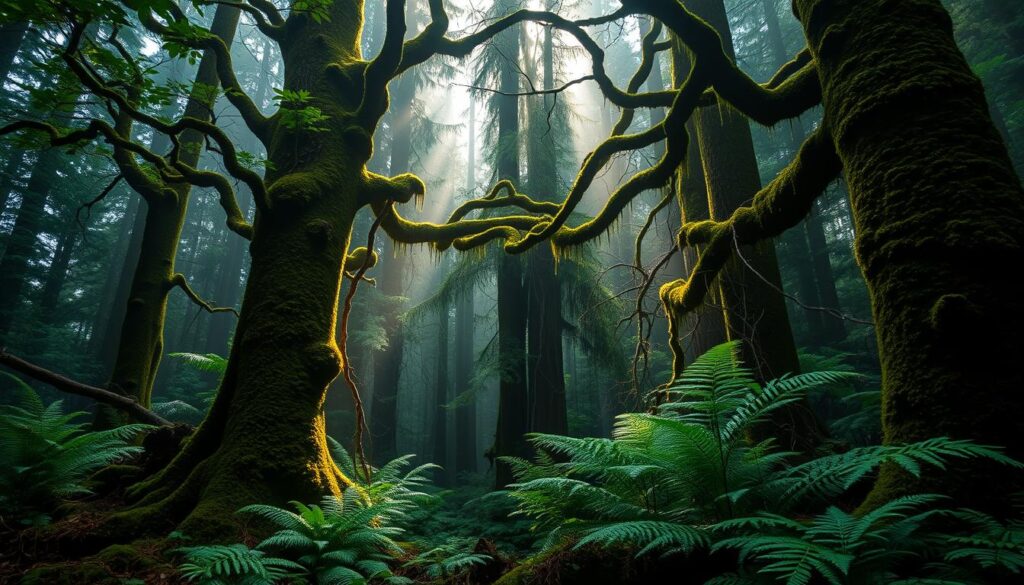
Must-See Attractions
Olympic National Park uniquely encompasses three distinct ecosystems: temperate rainforest, wild Pacific coastline, and alpine meadows. The Hoh Rain Forest receives up to 14 feet of rainfall annually, creating an emerald landscape of moss-draped trees and lush ferns. Hurricane Ridge offers panoramic views of the Olympic Mountains and Strait of Juan de Fuca, while the 73-mile wilderness coastline features dramatic sea stacks, tide pools teeming with marine life, and driftwood-strewn beaches. Ruby Beach and Rialto Beach showcase the rugged coastal beauty, while Sol Duc Hot Springs provides a relaxing soak after a day of exploration.
Best Hiking Trails
- Hall of Mosses Trail (Easy, 0.8 miles) – A short loop through the heart of the Hoh Rain Forest showcasing the lush, primeval environment.
- Hurricane Hill Trail (Moderate, 3.2 miles round-trip) – Offers spectacular 360-degree views of mountains, strait, and Vancouver Island.
- Hoh River Trail (Moderate to Strenuous, various distances) – Follows the Hoh River through ancient forest to the base of Mount Olympus glaciers.
Ideal Visiting Seasons
Summer (July-August) offers the driest weather and access to high-elevation areas, though coastal fog is common. Spring brings vibrant green growth and rushing waterfalls, while fall showcases beautiful foliage and fewer crowds. Winter is mild in the rainforest and coastal areas but brings heavy snow to the mountains, creating opportunities for snowshoeing and cross-country skiing at Hurricane Ridge. The rainforest is magical year-round, with winter offering a uniquely peaceful experience without summer crowds.
8. Rocky Mountain National Park, Colorado
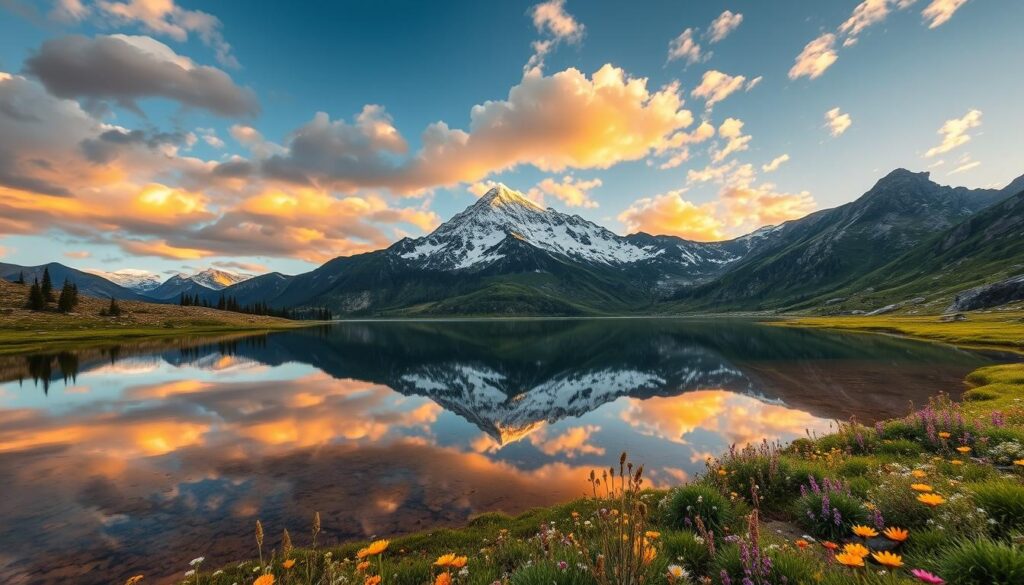
Must-See Attractions
Rocky Mountain National Park encompasses 415 square miles of spectacular mountain environments, with elevations ranging from 7,860 to 14,259 feet at Longs Peak. Trail Ridge Road, the highest continuous paved road in the United States, crosses the Continental Divide and offers breathtaking alpine views. Bear Lake provides a hub for several popular trails, while Moraine Park and Horseshoe Park offer excellent wildlife viewing, especially during the fall elk rut when bulls can be heard bugling across the valleys. Alpine wildflower displays peak in July, creating colorful meadows against the backdrop of snow-streaked mountains.
Best Hiking Trails
- Emerald Lake Trail (Moderate, 3.5 miles round-trip) – Passes three stunning alpine lakes (Nymph, Dream, and Emerald) with spectacular mountain backdrops.
- Sky Pond via Glacier Gorge Trail (Strenuous, 9.4 miles round-trip) – Features waterfalls, lakes, and a final scramble to a dramatic cirque surrounded by sheer cliffs.
- Alpine Ridge Trail (Easy, 0.6 miles round-trip) – A short but steep trail at 12,000 feet offering panoramic views of the alpine tundra ecosystem.
Ideal Visiting Seasons
Summer (July-August) provides ideal hiking weather and wildflower displays, though afternoon thunderstorms are common. Fall brings spectacular foliage, especially aspen groves turning golden, and the dramatic elk rut. Spring offers fewer crowds but lingering snow at higher elevations. Winter transforms the park into a quiet wonderland perfect for snowshoeing and cross-country skiing, though Trail Ridge Road closes, and many high-elevation areas become inaccessible except to experienced winter mountaineers.
9. Sequoia & Kings Canyon National Parks, California
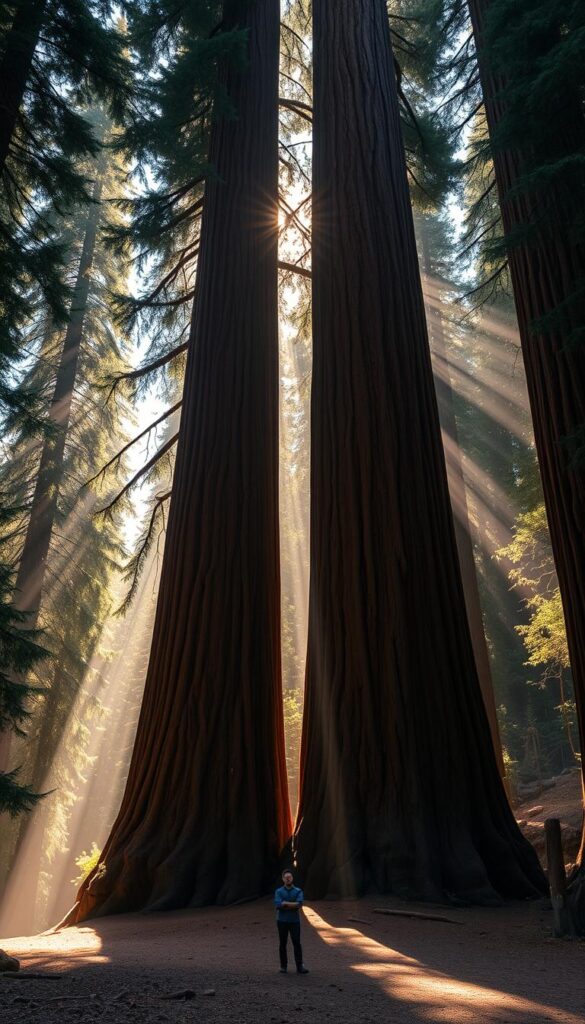
Must-See Attractions
Sequoia and Kings Canyon National Parks protect some of the world’s largest trees and deepest canyons. The General Sherman Tree, the largest tree on Earth by volume, stands 275 feet tall with a 36-foot diameter base. The Giant Forest houses five of the ten largest trees in the world, while the adjacent Kings Canyon rivals the Grand Canyon in depth and ruggedness. Moro Rock offers panoramic views of the Great Western Divide, and Crystal Cave showcases spectacular marble formations. The parks’ elevation range from 1,370 to 14,494 feet (Mount Whitney, the highest point in the contiguous United States) creates diverse ecosystems from chaparral to alpine tundra.
Best Hiking Trails
- Congress Trail (Easy, 2 miles) – A paved loop through the Giant Forest featuring numerous massive sequoias.
- Mist Falls Trail (Moderate, 8 miles round-trip) – Follows the South Fork of the Kings River to a powerful 45-foot waterfall.
- Lakes Trail to Pear Lake (Strenuous, 12.5 miles round-trip) – Climbs through forest to a series of beautiful alpine lakes in a granite basin.
Ideal Visiting Seasons
Summer (June-August) provides access to all areas of the parks, though higher elevations offer relief from valley heat. Fall brings pleasant temperatures, fewer crowds, and beautiful foliage. Spring showcases wildflowers and rushing waterfalls from snowmelt. Winter transforms the giant sequoia groves into a magical snow-covered landscape, though chains or 4WD vehicles are often required, and many facilities close seasonally.
10. Acadia National Park, Maine
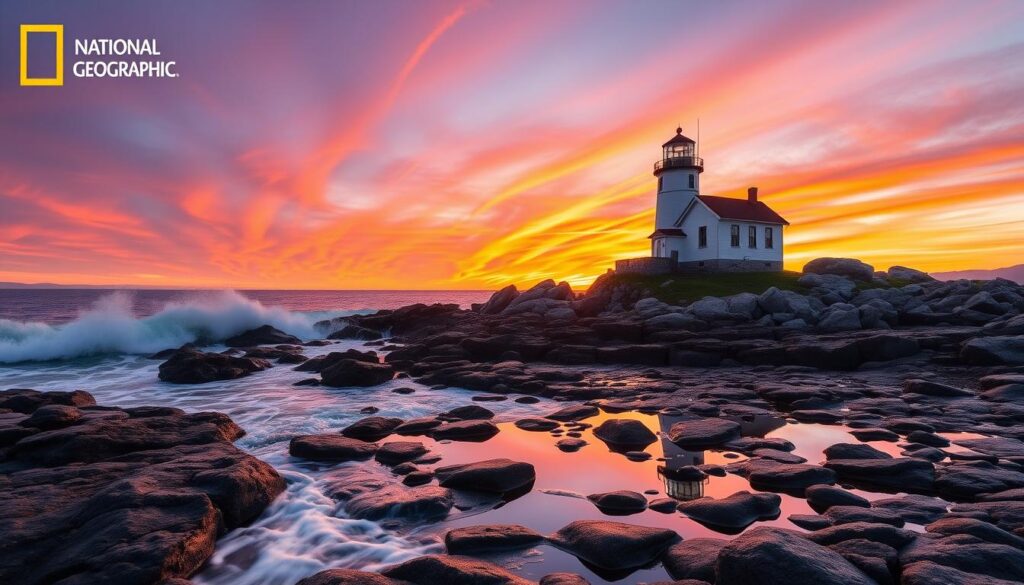
Must-See Attractions
As the only national park in the Northeast, Acadia protects a rugged landscape where mountains meet the sea. Cadillac Mountain, the highest point on the North Atlantic seaboard at 1,530 feet, offers the first sunrise view in the United States from October to March. The 27-mile Park Loop Road provides access to key attractions including Thunder Hole, where waves crash into a narrow inlet creating thunderous sounds and spectacular splashes. Jordan Pond offers reflective views of the rounded Bubbles mountains, while the historic carriage roads, built by John D. Rockefeller Jr., provide 45 miles of car-free paths for walking, biking, and horseback riding.
Best Hiking Trails
- Ocean Path (Easy, 4 miles round-trip) – Follows the dramatic coastline from Sand Beach to Otter Point with spectacular ocean views.
- Precipice Trail (Strenuous, 1.6 miles round-trip) – A thrilling climb up the eastern face of Champlain Mountain using iron rungs and ladders (closed during peregrine falcon nesting season).
- Jordan Pond Path (Easy, 3.3 miles) – A scenic loop around a crystal-clear glacial lake with mountain views.
Ideal Visiting Seasons
Fall (mid-September to mid-October) showcases spectacular foliage as maples, birches, and aspens turn brilliant shades of red, orange, and gold against the blue ocean backdrop. Summer (June-August) offers warm temperatures ideal for hiking and swimming at Sand Beach, though this is also peak tourist season. Spring brings wildflowers and fewer crowds, while winter offers solitude for cross-country skiing and snowshoeing, though many park facilities close and some roads may be inaccessible.
Complete Your National Park Adventure Kit
After exploring America’s 10 most stunning national parks, ensure you’re fully equipped for your next outdoor adventure with these essential items that will enhance your experience in any park you visit.

Osprey Talon 22 Hiking Daypack
Whether you’re hiking Acadia’s Precipice Trail or exploring Sequoia’s giant forests, this versatile backpack provides comfortable storage for all your essentials. The integrated hydration system and multiple compartments keep gear organized and accessible during long days on the trail through America’s most stunning landscapes.

MSR Hubba Hubba NX 2-Person Tent
Experience the magic of staying overnight in or near national parks with this lightweight, durable shelter. Perfect for the varying weather conditions you might encounter, from Acadia’s coastal environment to Rocky Mountain’s alpine climate, this tent sets up quickly and provides comfortable protection after a day of exploration.

Hydro Flask 32oz Wide Mouth Water Bottle
Proper hydration is essential in any national park environment, from Zion’s desert heat to Olympic’s rainforest humidity. This insulated bottle keeps water cold all day, even in hot conditions, ensuring you stay hydrated while exploring America’s most stunning natural wonders.

Merrell Moab 2 Mid Waterproof Hiking Boots
From the rocky trails of Acadia to the muddy paths of Olympic’s rainforest, these versatile boots provide the support, traction, and protection needed for diverse terrains. The waterproof design keeps feet dry during stream crossings or unexpected rain, while the cushioned insoles ensure comfort during long days exploring America’s most stunning national parks.
Planning Your Visit to America’s Most Stunning National Parks
America’s national parks offer some of the most breathtaking landscapes on Earth, each with its own unique character and natural wonders. Whether you’re drawn to towering mountains, ancient forests, dramatic canyons, or coastal beauty, these ten parks represent the incredible diversity of our natural heritage. When planning your visits, consider purchasing an America the Beautiful Annual Pass for $80, which provides access to all national parks and federal recreational lands for a full year—an excellent value if you plan to visit multiple parks.
Remember that many popular parks now require reservations during peak seasons, so check official park websites well in advance of your trip. By respecting wildlife, staying on designated trails, and practicing Leave No Trace principles, you’ll help preserve these magnificent landscapes for future generations to enjoy. With the right preparation and essential gear, your journey through America’s most stunning national parks will create memories to last a lifetime.

